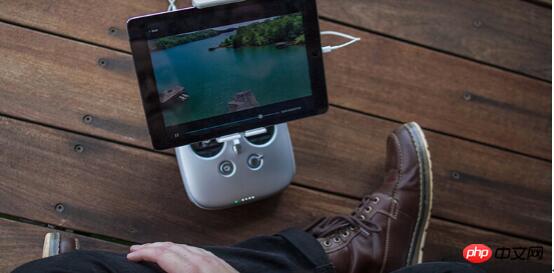How to protect data privacy and online security?
- -Original
- 2018-03-05 14:48:202031browse
The wheel of the digital age keeps rolling forward. If the networking capabilities of laptops, tablets and smartphones cannot yet meet the requirements of your concept of "intelligence", then the Internet of Things has gradually come online.

The Internet of Things has entered our lives with its outstanding performance in smart homes, home security and energy-saving products. I’m sure everyone loves gadgets like these that simplify their lifestyle and give them more control. According to the latest published figures, nearly 20.8 billion IoT devices will be connected to the network by 2020. In addition to consumer products, IoT solutions are also beginning to appear in fields such as environmental monitoring, infrastructure management, manufacturing, healthcare, transportation, building and home environment automation, energy management, and urban regulations.
So, how secure are these devices? Will our personal or financial data be accidentally leaked due to the security risks? There is no doubt that only by taking prudent preventive measures can we truly achieve security. .

1. Protect Home Wi-Fi
The advantage of most smart devices is that they can operate over WiFi, which means we don’t have to use them when using them. It plugs into a computer or smartphone. To protect your home WiFi from intrusions caused by smart devices, you should regularly check your router to see if it allows users to create separate guest networks to isolate untrusted guests. If such an option is available, include smart devices in this specific guest network for networking.
2. Choose the ideal password content
In order to ensure the integrity of personal data, please adhere to the best practice principle of one device, one password. Choose a unique password for each device. The password should be complex enough and contain at least 8 letters, numbers, and other symbols. There are some vulnerabilities in most IoT devices, and hackers may use them to leak your security information, including WiFi passwords, so be sure to pay attention.
3. Select Universal Plug and Play device (UPnP)
Some devices represented by cameras can communicate with the router through the access port. Although using external connections can simplify the access process, it can also introduce security risks. Please choose to use the UPnP mechanism on routers and smart devices whenever possible to prevent them from being exposed to the public network.

4. Update firmware regularly
Just as computer software must be updated regularly to ensure security, we should treat IoT devices with the same attitude. While it can be a painful process to go to each manufacturer's website to find available updates for each device, it's just as important as checking your smoke alarms twice a year and can lead to good protection.
5. Avoid using cloud services
Please carefully choose those IoT devices that require continuous access to the cloud to function properly. Cloud devices are often not secure enough and can expose a lot of personal information that you might not expect. Ideally, try plugging such a device into your home network before allowing it to access the cloud.
6. Use only necessary functions
Try to use only necessary functions, that is, close all unnecessary Internet connections. If you mainly use your smart TV to watch wireless programming, is it necessary to always connect it to the network? The answer is obviously no. In addition, if your TV is connected to the home network for streaming media transmission, do you still need to use it to access external networks? The answer is also no.
7. Don’t bring IoT devices into your work network
Finally, never bring IoT devices into your work network without explicit permission. Once hackers gain access to these IoT devices, they can quickly be traced back into the corporate environment, putting you and your employer at serious risk.
Related articles
See more- How to get started with learning php? The clearest PHP learning roadmap in history!
- Teach you 'How to watch the PHP Chinese course video and quietly become a master?'
- A comprehensive inventory of the most internationally influential hacking incidents in 2016!
- WeChat mini program practical video course is online! Learn quickly! Otherwise it will be too late!
- What do you need to learn to develop WeChat mini programs?


